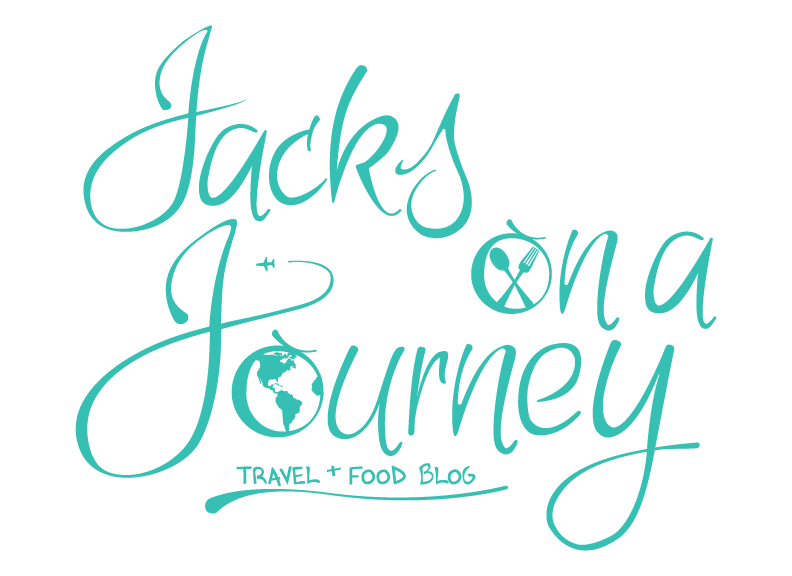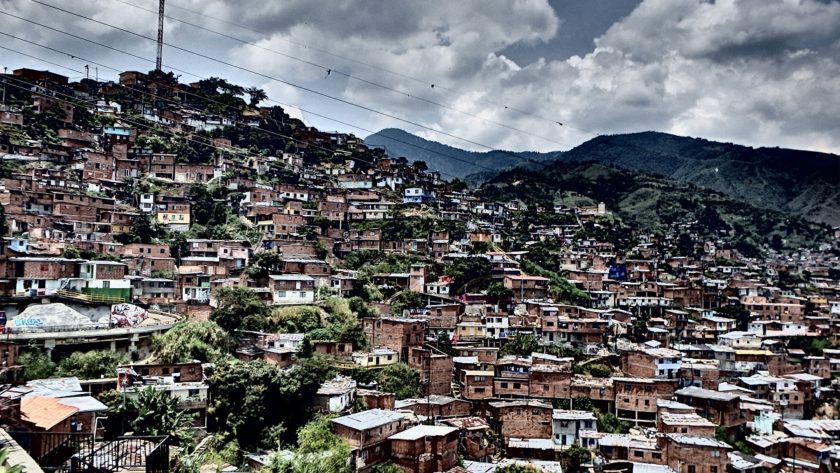Colombia has long held a bad reputation, primarily for it’s association with drugs, gangs and corruption. Medellín in particular was cast into the limelight for being home to the notorious Pablo Escobar and the Medellín Cartel.
But do not let this past make you second guess a decision to visit!
Fortunately, those particular dark days are history and throughout the last decade the city has undergone a dramatic transformation. It has fast become one of the country’s top destinations!
We were concerned our expectations of Medellín were too high… Whether doing our own research or just listening to the countless rave reviews from fellow backpackers who had already passed through, it seemed every traveller had good things to say about Medellín.
Many even claimed Medellín to be their favourite city in the whole of South America! After visiting ourselves, we couldn’t agree more.
What to do in Medellín
Free Walking Tour
No surprise, we were straight on the free walking tour here. We joined Real City Tours for a (very lengthy) 4 hour tour around the city.
It was the longest walking tour we did in South America but there was a lot to cover. And by no means did it drag on!


Our tour guide Carolina was absolutely fantastic! She was enthusiastic, knowledgeable and so proud to share her beautiful city with us.

During our stroll downtown we were pointed out several places that were a definite ‘no-go’ alone or after dark.
Occasionally we were also encouraged to switch our back-packs to be stylish front-packs. We were taught the saying “do not give papaya“, what the locals mean to not allow an opportunity for thieves.


What made this tour so memorable, aside from our guide’s enthusiasm, is that nothing was held back! Many of the stories were dark and deeply saddening but that is the real, raw history of Medellín.
And perhaps most amazingly, none of this was explained with anger or resentment, despite the countless lives that were ruined. Instead the past is told as a way to commemorate those who survived and what they endured. They serve as a reminder of how far their city has come.
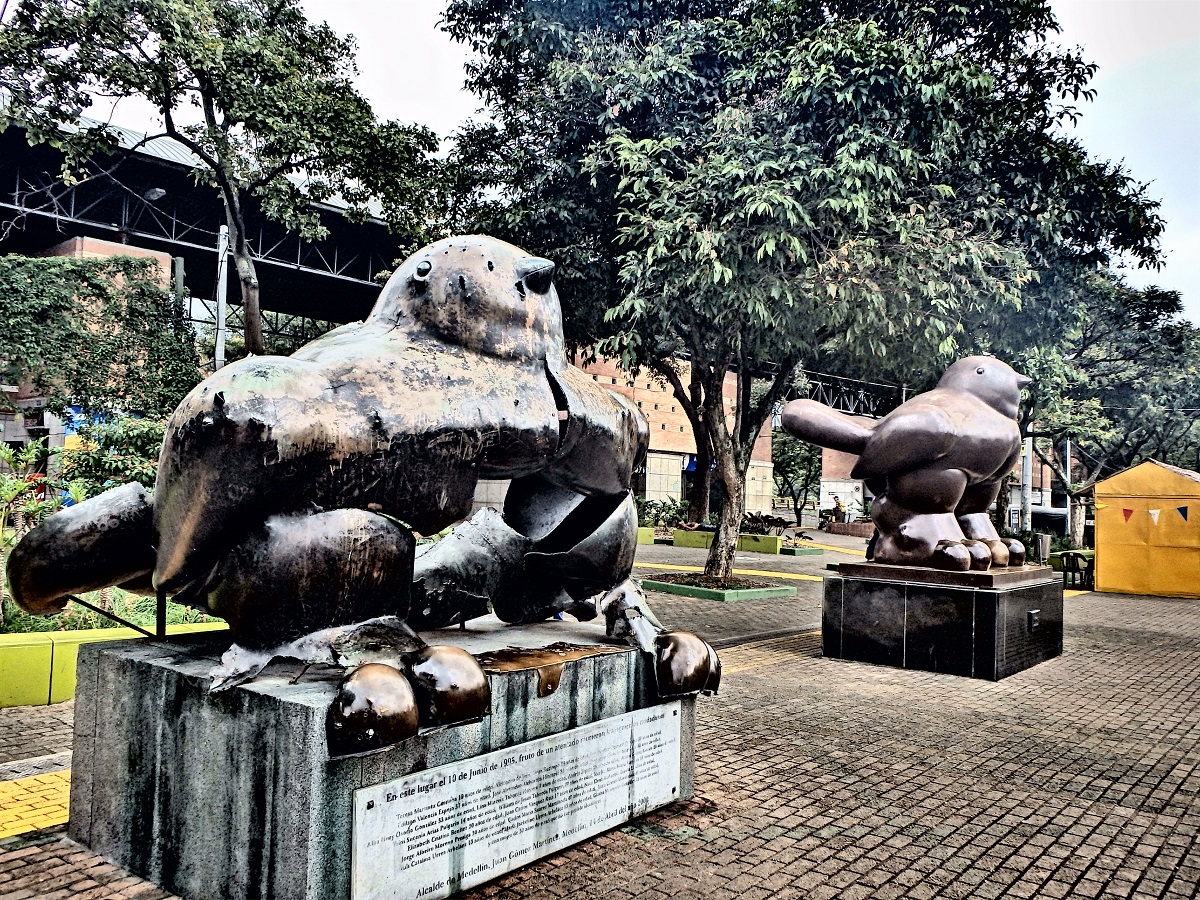
Their history is compelling and the people truly inspirational.
Comuna 13 Graffiti Tour
Backpackers travelling to Medellín have to make their way to the infamous Comuna 13. We highly recommend going on a ‘free’ tour rather than exploring the favela alone. Safety should always be paramount plus it’s still budget-friendly and you get insider info!
We booked with Zippy Tours and met our guide at San Javier station, an easy 45 minute metro ride from Poblado (where the majority of hostels are).
Why Comuna 13? This notorious neighbourhood was once known as the world’s most dangerous. Our guide Lizeth had actually grown up here during this time! It was pretty harrowing to hear her describe memories of military helicopters raining bullets down on her community.
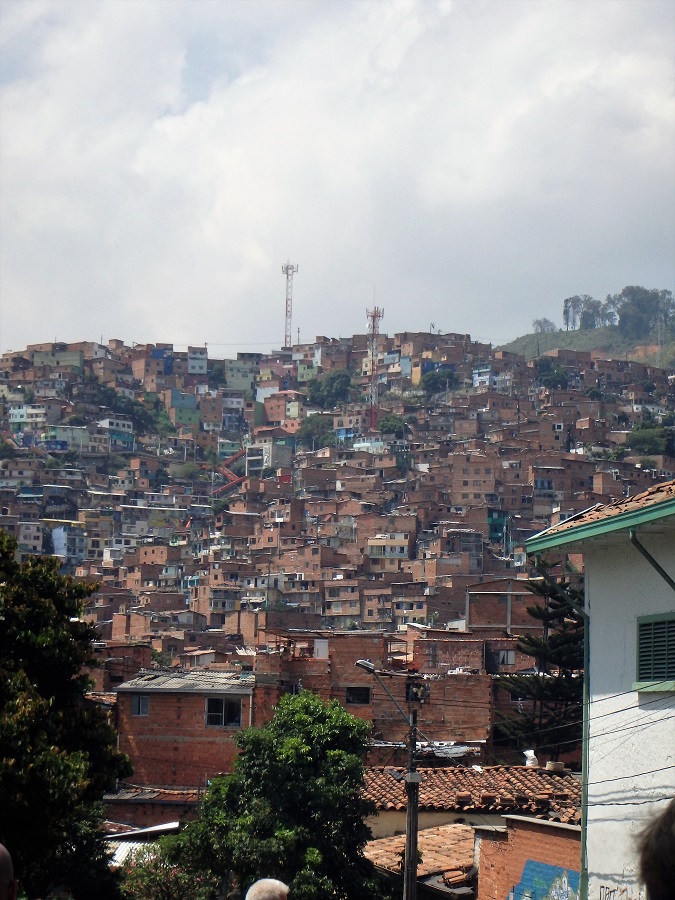
So what changed? An integral part of Medellín’s transformation was the introduction of their innovative transportation system.
In the mid-90s the Colombian government spent millions investing in a metro train system, metro cables and the famous escalators that now lead up the mountains to Comuna 13.

The mission of this project was to make the city centre more accessible to those living in the mountains and to shorten commutes to and from work. And ultimately improve the overall standard of living.
I think it is fair to say that this investment was definitely a step in the right direction.

Our tour served as both a window to the past and an insight into the local street art scene which has helped reinvent the community.
The murals add colour and vibrancy to the walls themselves, but they also have a deeper meaning among residents. As with many of the landmarks downtown, they depict the conflicts endured by residents and their survival.
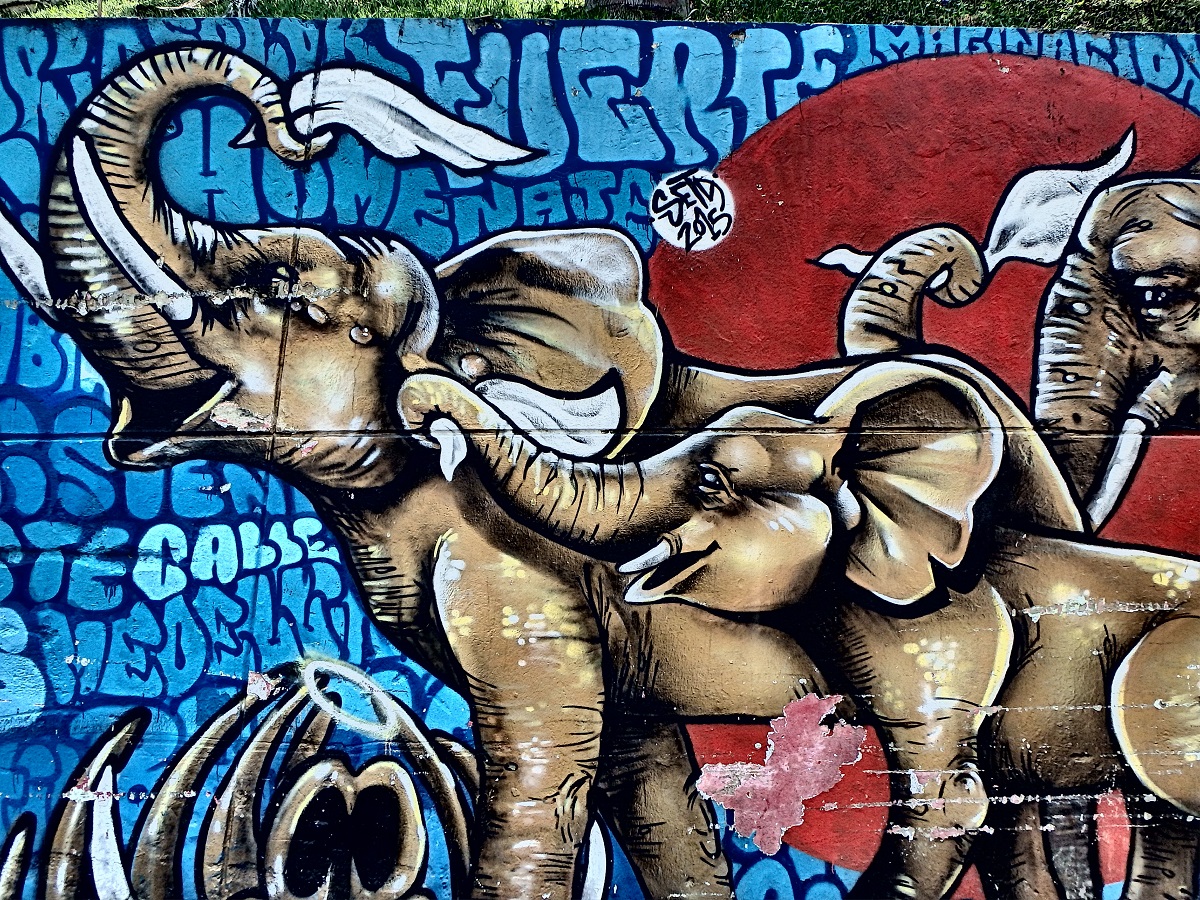

Explore Poblado
Backpackers will most likely find themselves staying in popular Poblado when visiting Medellín. It is the city’s wealthiest barrio, most likely because this is the main tourist hub in the city.
The first thing we noticed about Poblado is how green it was! Seemingly every street was lined by trees, particularly mango trees which were everywhere. There were also several parks and plazas dotted around the barrio providing additional pockets of greenery.
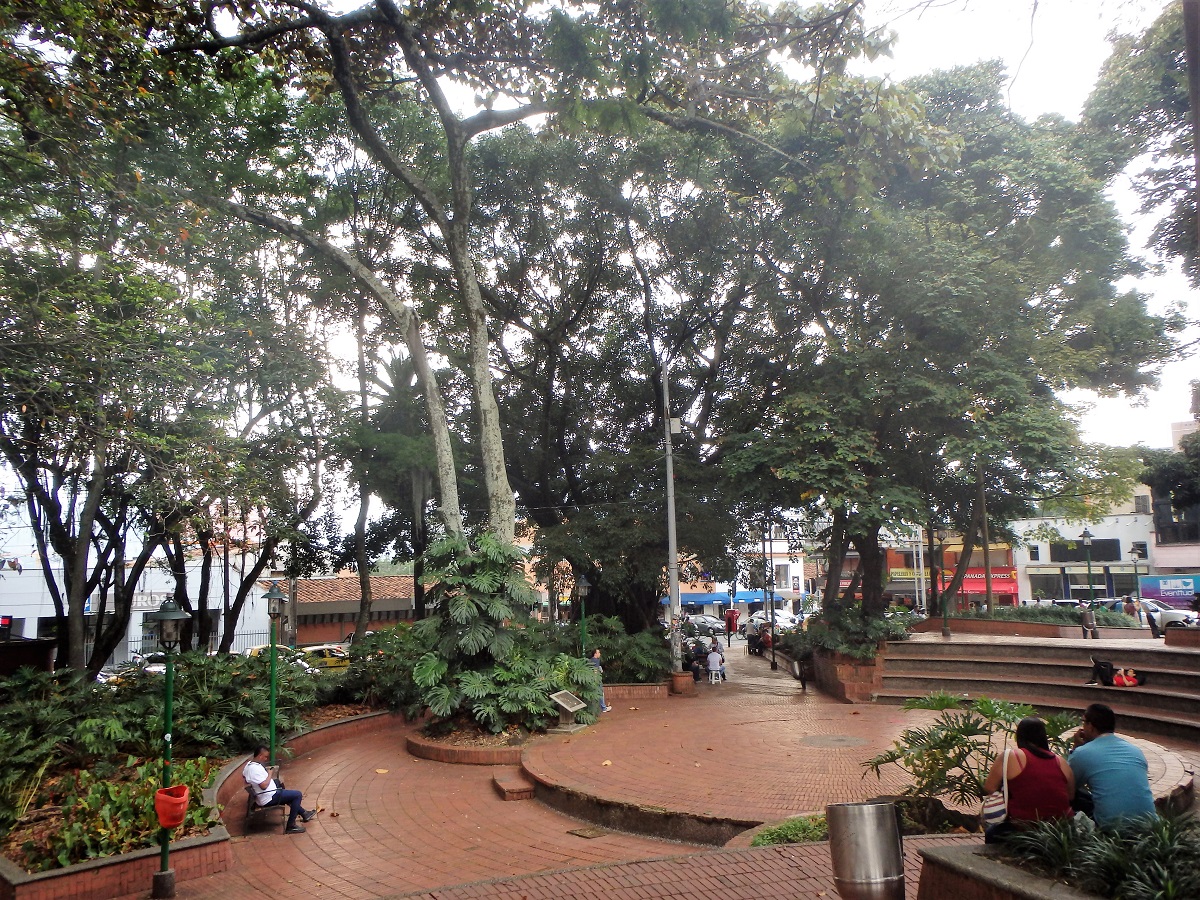
There are also plenty of awesome murals to check out.


Given that this district accommodates for travellers, it is no surprise that there are a large number of bars and restaurants here. Most backpackers here love the nightlife.
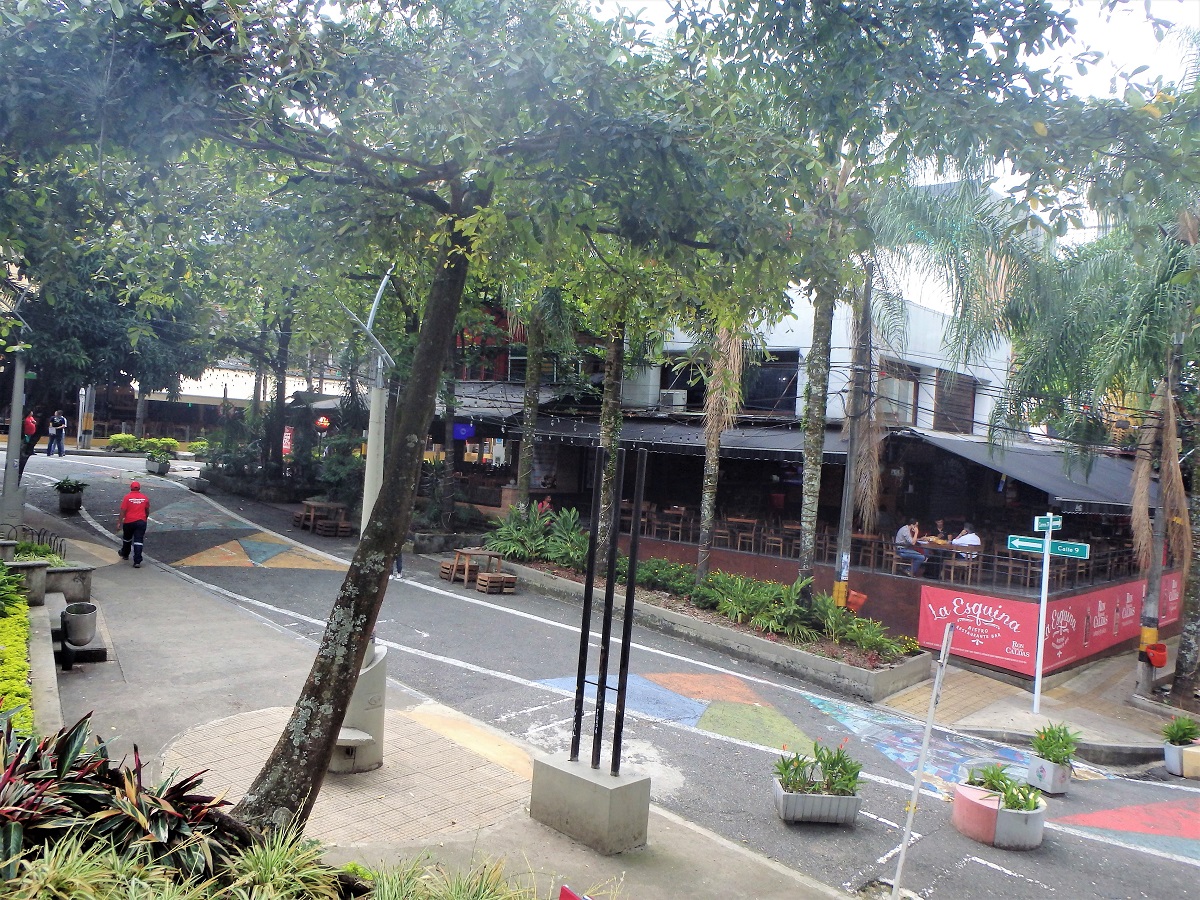
While our partying days are long behind us, we’re never ones to turn down a bit of culture (reggaeton is to be experienced) or a drink. For this I refer to another Colombian staple: Aguardiente, aptly named ‘firewater’.
I can’t encourage shots of Aguardiente without advising caution and drinking responsibly. And also key is if you do check out Poblado’s nightlife, always go out (and return) as a group. Intoxicated tourists are easy (and common) pray for thieves.
Ride the Metro Cable to Parque Arvi
Parque Arvi is an ecological nature reserve around 30km from the city centre. It is easily accessible by the metro and a great way to take a break from the city.

We first took the cable car up to Santa Domingo, which was included in the standard 2,000 COP fee (<$1 USD). From there we paid another 5,000 COP ($2 USD) each, one way, for the 15 minute journey to the park.
The journey offers incredible views over the city and the dramatic transition over the mountain has to be seen. From concrete jungle to actual jungle, as far as we could see! It is a relaxing ride over the forest’s canopy.
Once at Parque Arvi we recommend heading straight to the information both for a map. The staff here were super helpful providing us with info on various trails around the park.
Tip: We visited Parque Arvi in the afternoon, having only heard about it that morning on our Comuna 13 tour. Since the park closed at 5pm we found ourselves with very limited time to explore. Definitely arrive here in the morning!
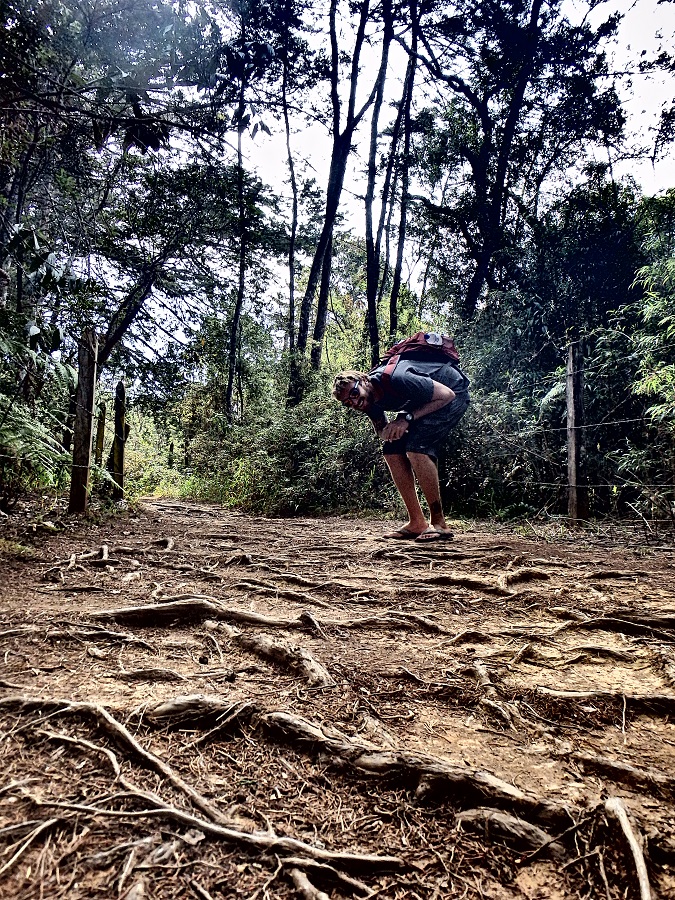
We sadly only had time for one short trail as food was our first priority on arrival. Their almuerzo was delicious, cheap and huge! Good energy for walking.

Go to a football game
Another hugely popular activity for backpackers in Medellín is watching a local football game. The sport is huge across the whole of South America and Paisas are just mad for it!
The two biggest teams in the city, and arguably the country, are Atlético Nacional and Deportivo Independiente Medellín. The rivalry between these two teams is fierce.
While this clash didn’t occur during our time in the city, we were still excited to watch Atlético Nacional play a smaller local team, Envigado. We were even able to have tickets delivered directly to our hostel thanks to the staff. They cost us just $20,000 COP ($7 USD) each.
Tip: If you go to the stadium to buy your tickets you can chose which section of the stadium to sit in. Certain sections are more rowdy than others. We ended up with the high-energy Atlético fans which turned out to be a bonus.

Given the prevalence of fights that break out at games, security is pretty tight. Guards patted us down and there were even sniffer dogs. Guards were selectively confiscating cigarettes and even coins from one of our friends!
Not surprisingly, alcohol is also prohibited. Not that it’s needed here. The energy and noise from the fans was non-stop for the entire 90 minute game! It was mainly singing broken up by bursts of shouting, swaying and jumping around.
When Atlético scored it was beyond insane! Being in the midst of enthusiastic Atlético fans, we were very happy that the team won. I am not sure we would have wanted to be there had the positiveness turned sour!
As advised, we were then sure to make a quick getaway the second the game finished. Apparently this is when the majority of fights tend to break out…
Tip: The staff at our hostel advised us not to wear either of the teams colours. This prevents you getting any unwanted attention from an unhappy fan looking to vent their anger.
Final Tip: Make sure you go to the right stadium. It may sound stupid, probably because it is, but we didn’t (ha!). We ended up outside Atanasio Girardot Stadium (Atlético Nacional’s home stadium) in the dark with no one around. It was a little nerve wracking but luckily we still made it to the right place on time and without incident.
Visit Guatapé
Our backpackers guide to Medellín wouldn’t be complete without encouraging a trip to the incredible town of Guatapé.
Guatapé is just 2 hours from Medellín and totally worth visiting. It was one of the most picturesque places we visited in Colombia and it’s home to the impressive La Piedra del Peñol monolith.
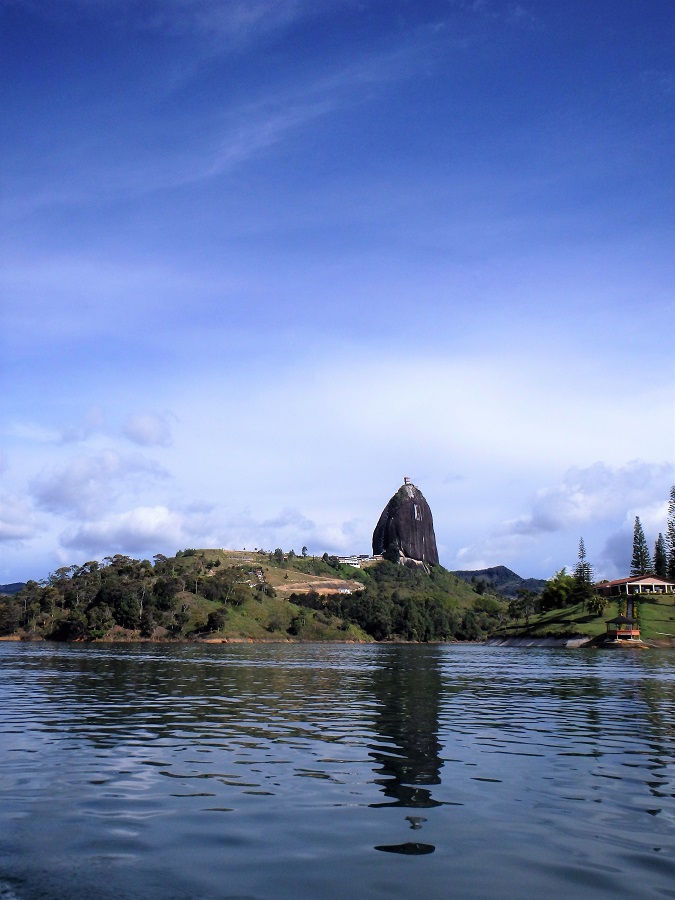
There are companies that offer day trips from Medellín to Guatapé but we recommend longer if possible. We made our own way there and stayed for two nights in a beautiful spot!
Be sure to check our blog on Guatapé for more to do in this picturesque town.
What to eat in Medellín
I have talked about food a lot in our other Colombia blogs. In Medellín we found all of our usual favourites: pandebono, empanadas, arepas, patacones etc. but there were also a few new discoveries.
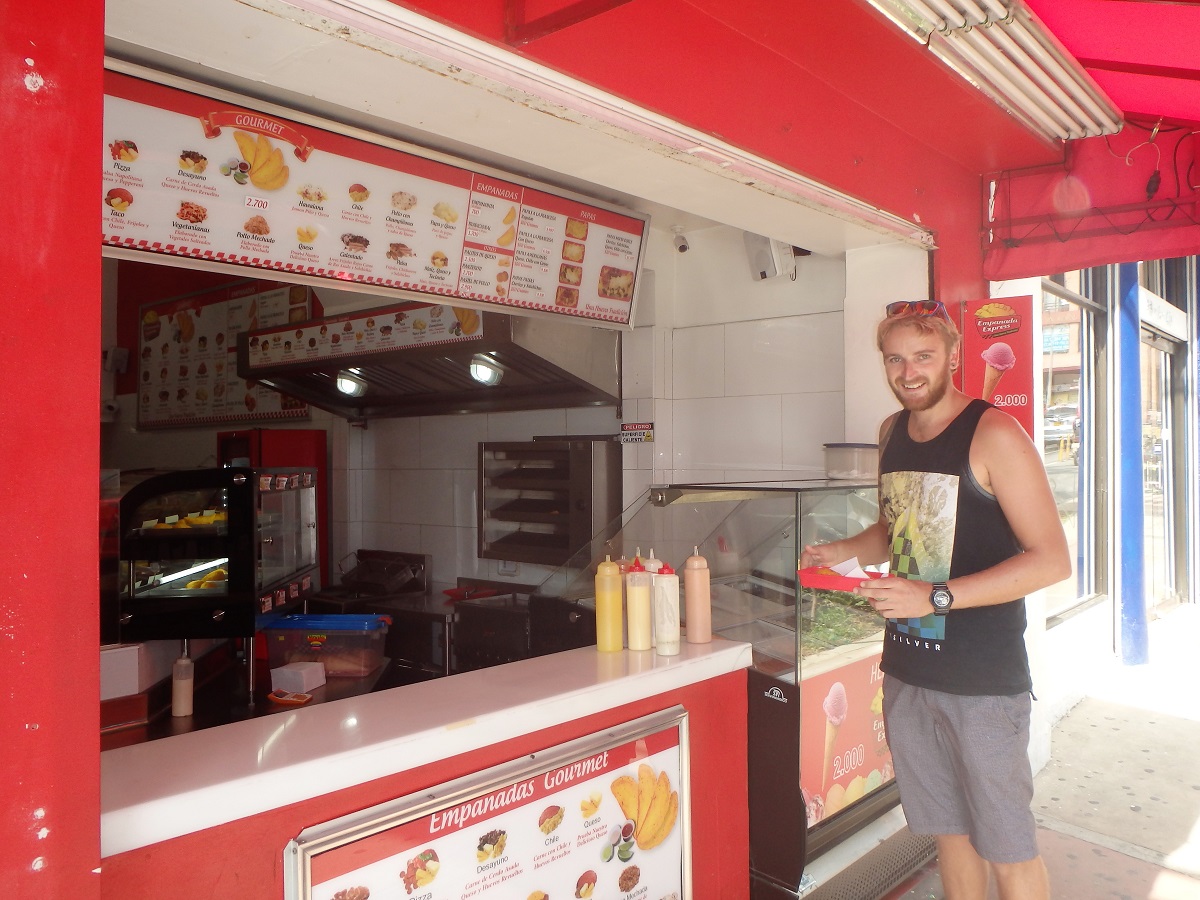
On the snack side, were doughnuts. We were told they were very popular in Medellín.
This information was affirmed when we saw a couple of locals selling jam-stuffed goodies out the back of their cars. One man was a daily presence near our hostel. We are happy to report that they were delicious!

However the food that takes the crown for most memorable in Colombia, has to be the Bandeja Paisa.
Originating in Medellín, a Bandeja Paisa is a hearty, stodgy dish that is anything but light. We thought of it as Colombia’s answer to a British fry-up, but for lunch! I realise my choice of words may not quite be selling it but it is honestly sooo good.
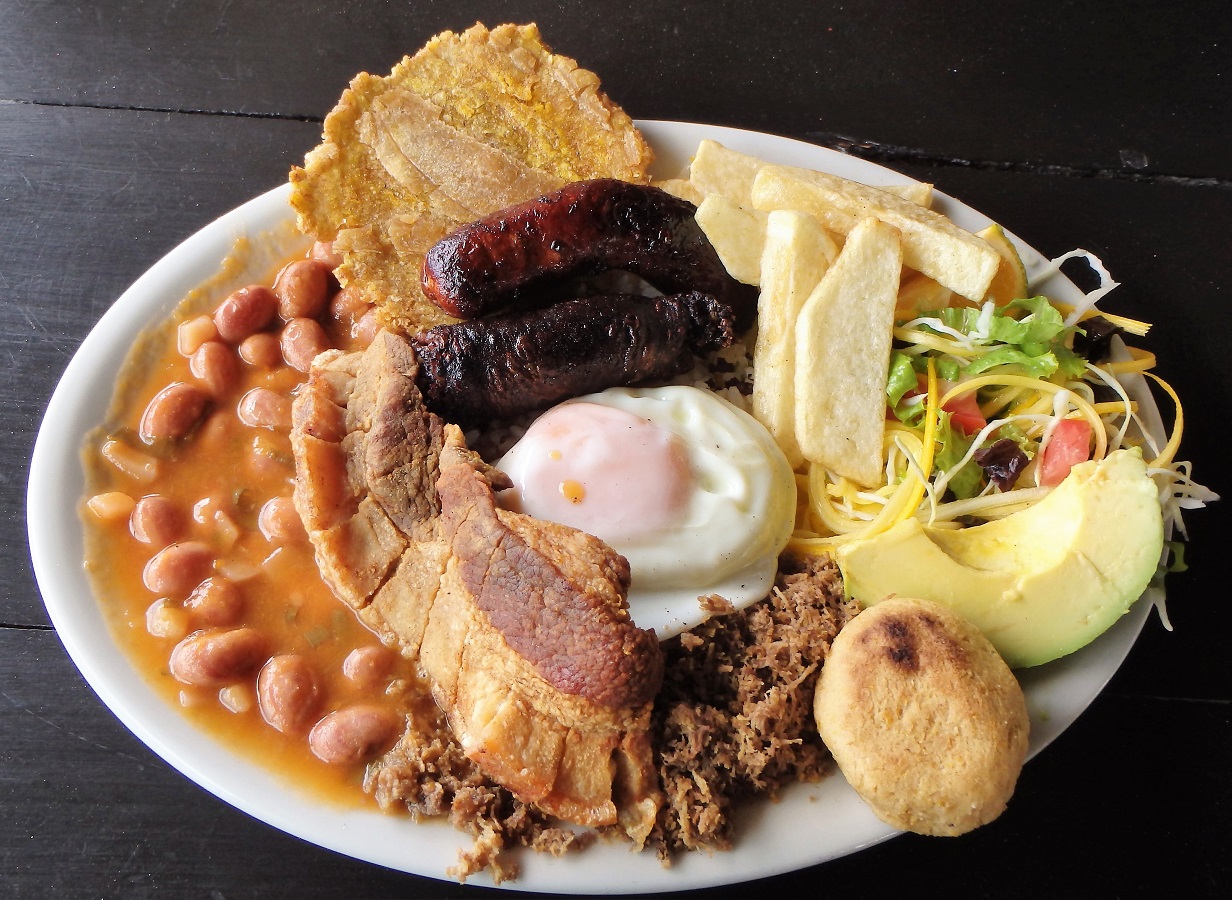
We typically shared one of these between the two of us. When we did pig-out and have one each dinner was usually a write-off. It’s probably not difficult to see why.
This over-sized portion includes chicharrón (deep-fried pork belly), chorizo, blood sausage (black pudding), shredded beef, rice, beans, chips (steak-fries to our American friends), patacones (fried plantain), avocado, salad, an arepa and is topped with a fried egg. At least there is some green on there, right?
Where to stay in Medellín
There are loads of great hostels in the Poblado barrio in
Medellín. The Black Sheep, Casa Kiwi and Purple Monkey are highly rated hostels on Hostelworld and were recommended to us by other travellers.
If you are looking for a big party place then Happy Buddha might be up your street. Or, as we were smartly advised, stay somewhere less chaotic and just visit there to party. These hostels all range from about $10-$12 USD a night for a dorm bed.
Despite the above, we ended up staying at the Pitstop Hostel in Poblado. It had okay reviews but what sold us was the cheap price and available amenities. We just couldn’t say no to hammocks, a pool, pool table, table tennis and a private room for just $25 USD between us. Plus the staff were pretty friendly.

I will be honest, I did discover a bit of a roach problem in the kitchen at night and another couple we met had an issue with bed begs that wasn’t handled so well…. This might explain why the hostel is now closed so we can’t really recommend it anyway!
Best to go with one of the others mentioned.
How to get to Medellín
We made our way to Medellín from Bogota via an 11 hour overnight bus. This was booked easily online with Busbud for around 70,000COP (US$25) each.
We recommend booking directly at the bus station if possible to find an even cheaper deal.
There are also regular buses between Medellín and Colombia’s coffee triangle. We found daily direct buses to Armenia and the occasional direct on to Salento. Booking our bus tickets directly at Medellín’s bus terminal we paid around 50,000 COP ($17 USD) each for the 7.5 hour journey.
Anther possible bus route to Medellín is straight from Cartagena which is a long, but luckily direct, 20 hour ride. You can find tickets online with Busbud from 158,000 COP ($55 USD).
Aside from buses, the other option to reach Medellín is by flying. You can get internal flights from Bogota from as little as 150,000 COP ($50 USD) or you can fly directly from the states from around $350-$500 USD, depending on the time of year you visit.
We hope our Backpackers Guide to Medellín has sparked a desire to visit this incredible Colombian city! No doubt any readers will love it as much as we did. We wish you happy travels.
